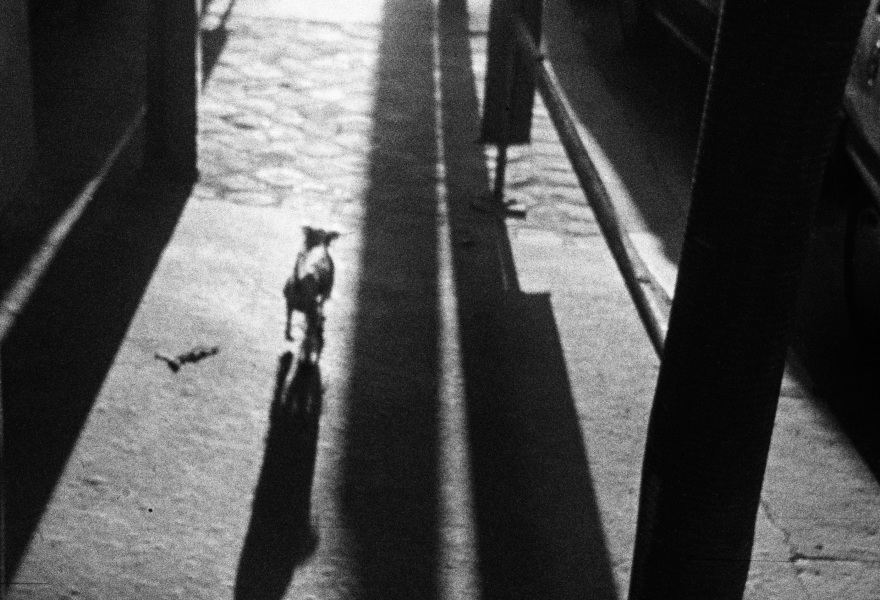11 february 2025, Flor Linckens
Mark van den Brink and the magic of the spy camera
Until 1 March, the work of Mark van den Brink will be on view at Galerie Wouter van Leeuwen in Amsterdam. The exhibition 'The Minox Files and Stills & Stones' brings together two key pillars of his oeuvre: his early Minox photography and the still lifes he later created in his studio.
Since the 1990s, Van den Brink has been working with a so-called Minox, an ultra-light aluminium miniature camera that was used for espionage from the 1940s onwards, particularly during the Cold War. Easily concealed, the Minox became an iconic prop in films — where Van den Brink first encountered it. He found his first Minox camera in a second-hand shop and soon realised how perfectly it suited his intuitive and slightly voyeuristic way of photographing.
With a negative measuring just 8 × 11 mm — the smallest analogue film format — the Minox imposes a specific approach to photography. Because this format was prohibitively expensive, Van den Brink decided to cut his own plastic film to size by hand. This process, carried out entirely in the dark, resulted in scratches and imperfections on the negative, which were further accentuated during development in the darkroom. Van den Brink embraces these flaws, integrating them into his visual language. His images, both in colour and black and white, are snapshots with a spontaneous, poetic, and almost diary-like quality.
In an interview with FotolabKiekie, the artist stated: “The scratches and developing flaws are part of the process. I see them as a gift, and sometimes they even add something to the image. But more often than not, I spend hours retouching my prints with ink and a tiny brush to remove dust. I also look for images that feel timeless. I leave out as many details as possible that could pin a photo to a specific era. That sense of timelessness is something I consider beautiful. Of course, I am a bit of a dreamer and somewhat poetic. My photos are also about distance and closeness.”
With his inconspicuous camera, Van den Brink wandered through cities and landscapes, from the bustling streets of Paris and New York to the snow-covered peaks of the Swiss Alps. The camera’s technical limitations lend his photographs a soft, dreamlike quality, as if they were plucked from memory. Between 1994 and 2005, he built an extensive archive of 15,000 images, 350 of which were compiled in his 2021 book The Minox Files. A selection from this series is now on display at Galerie Wouter van Leeuwen.
After 2004, his focus shifted — in part because he became a father. In his new studio at Pakhuis Wilhelmina in Amsterdam, he turned to still lifes and occasional portraits, resulting in the series "Stills & Stones". While the Minox had previously allowed him to capture everyday life unnoticed, his choice to work with still lifes required an entirely different approach.
Without flash or artificial lighting, and instead playing with the daylight streaming through a square skylight — which he could adjust to his liking — he began by placing a single stone on a stool, like a sculptor positioning a raw piece of material on a pedestal. This starting point led to a series in which simplicity and attention take centre stage. Although the Minox is technically ill-suited to still-life photography — designed more for fleeting snapshots — Van den Brink initially clung to his trusted instrument. This constraint turned into a challenge, prompting him to see things in new ways. He later expanded his practice to include other cameras, such as compact film cameras using 110 film cassettes.
What connects both series is Van den Brink’s intuitive working method. He does not seek out subjects but recognises them the moment he encounters them. Whether it is a serendipitous urban composition or a carefully arranged still life, his photographs reveal a free, experimental way of looking. Van den Brink also explores different techniques, such as attaching his camera to binoculars or a telescope. His work moves between documentary and abstraction, between spontaneity and control. It is precisely within this delicate balance that the strength of his images lies.
Mark van den Brink was born in 1965 in Witmarsum, Friesland. He studied Photography at the Gerrit Rietveld Academie in Amsterdam, where he lives and works to this day. His work has been shown at institutions including the Scheepvaartmuseum, Foam Amsterdam, the Frans Hals Museum and Kunstmuseum Den Haag.



